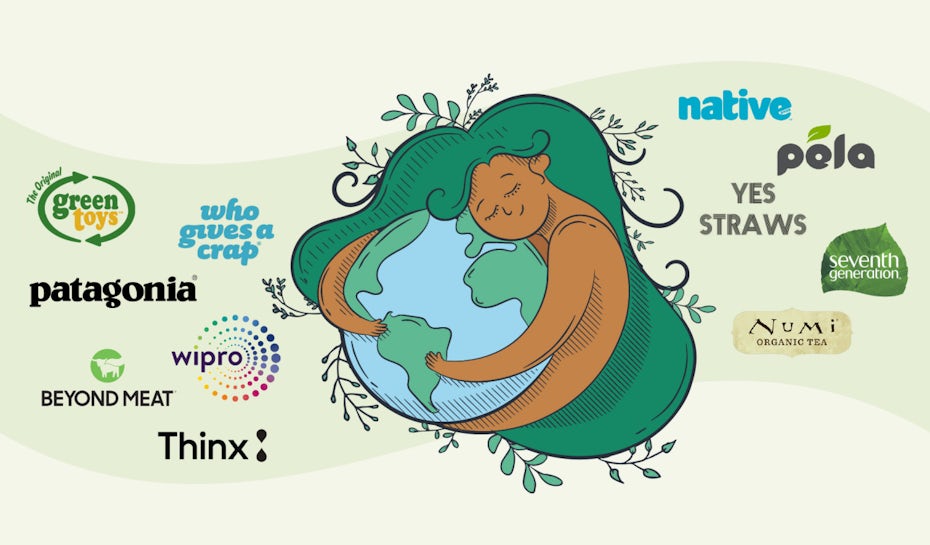Research Step 3 – How has Eco-friendly marketing affected sales of companies who use this label to their advantage?

– In recent decades, much of the corporate talk surrounding the phenomenon of “going green” revolved around the cost of doing so. (1)
– Only 10 years ago did companies begin to see the benefits of adopting sustainable practice in an effort to create a competitive advantage against other businesses. (1)
– It is not possible in this day and age for a company to prioritize profits over the environment if they want to remain successful and competitive against their competition. (1)
– According to a 2014 study done by Nielsen, 55 percent of all consumers are so passionate about saving the planet and life on earth that its people are willing to spend more money on the sustainable option when it comes to products and services – this trend appears to be growing. (1)
– It was in this survey that it was confirmed that half of those who make consumer decisions based on sustainable actions were a part of the millennial generation. (1)
– In 2015, Millennial surpassed Baby Boomers as the largest generation – and furthermore, the largest consumer base (1)
– It is vital that the narrow gap between intentions and action not only meets corporate sustainability goals, but also provides practices that further protect the planet (2)
– According to Unilever, 70% of it s greenhouse gas footprint is dependent on the products that consumers choose to purchase, and how they use and dispose of them. (For example, conserving both water and energy while washing clothes or properly recycling suitable materials) (2)
– Calgary, Alberta had a dilemma on their hands in 2010. Their resolution came quick when they called to action on a sustainable practice; the “grass cycling” program. The cities’ “grass-cycling” program enforced the rule that grass clippings were to be left to naturally decompose on lawns instead of being bagged and trashed into landfills, after mowing. (2)
– In just two weeks, this new intervention resulted in almost twice as much grass-cycling as before. This just goes to show that its not just the company contributing to greenhouse gas emission, but the consumer’s method of usage that makes all the difference (2)
– Using the power of social influence as a tool to promote pro-environment behaviours will further lead to a minimalist approach to human consumption (2)
– For instance 65% more sustainable purchases were made once online shoppers knew that others were purchasing Eco-friendly products, resulting in 65% more Eco-friendly products being sold (2)
– Contemporary consumers are well-informed on the topic of ecolabels, a brilliant marketing strategy used by many companies as forms of advertising (3)
– In response to the growing concerns about the environment, a new type of consumer sensitivity has been added to the field (3)
– Now more than ever, consumers seem to be becoming more and more concerned about the negative impacts their purchasing decisions have on the environment (3)
– However, that is not to dismiss the fact that some producers fail to provide complete and credible ecolabel information. This leads me to the basis of this inquiry, how does this marketing label impose a false reality of what is actually Eco-friendly and what is not. (3)
– Other studies suggest otherwise on the fact that eco-labels allow for an encouraging way to inform and therefore make better purchasing decisions on products (4)
– There is a clear and significant gap between eco-label marketing and actual consumer behaviour. (4)
– South Korea for instance is a heavily industrialized country that aims to face increasingly greater environment and energy sustainable issues. To adapt and possibly mend this issue, they established two types of eco-label; Energy Efficiency grade, and Korea Eco-label (4)
– Although something as simple as an ecolabel can have the power to sway the objective of the consumer to the earth friendly option when purchasing, private information about persons personal life plays a greater role in their ultimate decision making process. (4)
– For example, people of a lower socioeconomic class are less likely to want to purchase the eco-friendly option as many companies who are truly eco-friendly will charge more for their product. This is due to the fact that sustainable manufacturing methods are often times a lot more hassle than their non-sustainable ones. (4)
-This issue also runs on a generational pattern. For instance there is no doubt that Millennials and Gen-Z are vastly different than their parental generation counterparts.(5)
– As more research is being done, younger generations are realizing that environmental pressures are beginning to have a real impact on our livelihoods and futures. (5)
– This soon led to 9 in 10 business leaders stating that consumers would begin to hold them accountable for their environmental footprint unless they made substantial changes in manufacturing practice and well-being of employees. (5)

– This effect has ultimately had an impact on major companies such as Apple, Dell, Google, and Amazon to name a few that have recently pledged in to reduce their carbon footprint and improve sustainable practice within the company (5)
– To delve in deeper, Apple just committed to making their company completely carbon neutral by the year 2030. Steps like these may seem far out of reach, however when companies make pledges as grand as this one some progress must be made (5)
– Another example of this is Starbucks and its response to recent claims against the company for not being environmentally friendly with their excessive usage of plastic. (6)
– The company is now claiming that they use 30% less water and 25% less energy during its production. (6)
– Nestle has also provided an environmental strategy on packaging. The company claims to be committing to 100% recyclable materials by the year 2025 (6)
– It is safe to say that environmental claims about sustainability and green marketing are creating loads of advances when it comes to the new ways of the world. With a continued consumer effort, and company pledges, greenhouse gas emissions can be reduced drastically in the coming years. (6)
1.Hinton, E. (2017, August 13). Why going green gives your business a competitive advantage. Bizjournals.com. Retrieved January 6, 2023, from https://www.bizjournals.com/portland/news/2017/08/23/why-going-green-gives-your-business-a-competitive.html
2.White, D. J. (2022, November 7). The elusive green consumer. Harvard Business Review. Retrieved January 7, 2023, from https://hbr.org/2019/07/the-elusive-green-consumer
3. Riskos, Kyriakos, et al. ‘Ecolabels and the Attitude–Behavior Relationship towards Green Product Purchase: A Multiple Mediation Model’. Sustainability, vol. 13, no. 12, Jan. 2021, p. 6867. www.mdpi.com, https://doi.org/10.3390/su13126867.
4. Hwang, Jung-Ah, et al. ‘Why Do Consumers Respond to Eco-Labels? The Case of Korea’. SpringerPlus, vol. 5, no. 1, Nov. 2016, p. 1915. BioMed Central, https://doi.org/10.1186/s40064-016-3550-1.
5. Newman, Daniel. ‘How Leading Global Companies Are Using Sustainability As A Market Differentiator’. Forbes, https://www.forbes.com/sites/danielnewman/2020/07/24/how-leading-global-companies-are-using-sustainability-as-a-market-differentiator/. Accessed 11 Jan. 2023.
6. Frigo, Carolina. ‘Green Marketing: What It Is and Why Companies Can’t Do without It’. Doxee, 16 Feb. 2021, https://www.doxee.com/blog/marketing/green-marketing-for-companies/.
